Just a handful of photos, some a few weeks old (from before the eclipse, even,) right on up to today, because I felt the need to update some.
We’ll start with another semi-abstract, taken on the day of the previous month-end abstract (though that post had already gone up.)
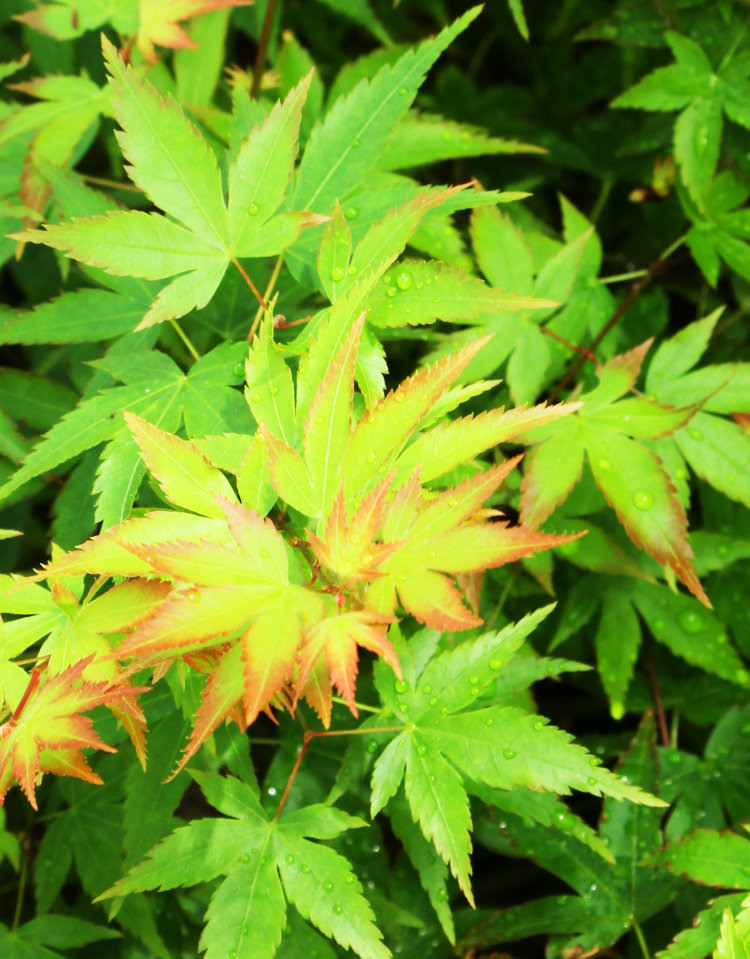
This is the favorite Japanese maple, a small one that’s remained potted but has the thickest canopy of any tree I’ve ever seen, even though it’s just over a meter across. This was while it was still in the greenhouse – it got moved out once I had returned from Ohio – and just after watering, so you can see some of the drops. The reddish edges denote new growth that quickly fades into uniform coloration.
And some updates on other plants, because I know you’re anxious to hear how those are going.
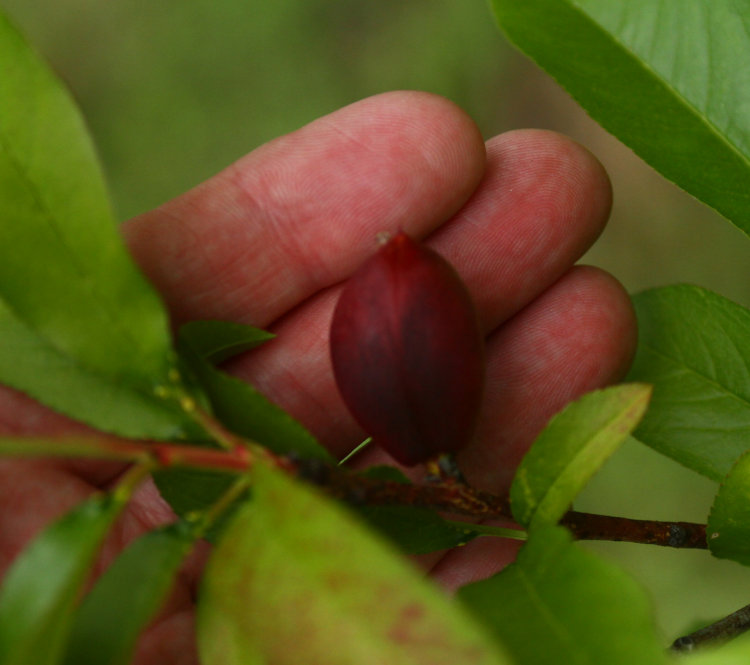
The almond tree, that started spontaneously in our compost pile some 12 years ago, is doing very well this year, in part because I started treating it with deer repellent even before it started to bud out. It now has quite a selection of developing almonds – which it had last year, but something stripped them off before they were ripe. This year, however, they’re remained untouched are are getting big; that’s my hand in the background. Though I have no idea what a ripe almond actually looks like – I need to research that soon.
The fruit trees in the back, moved from the greenhouse the same day as the Japanese maple, are kicking it as well.
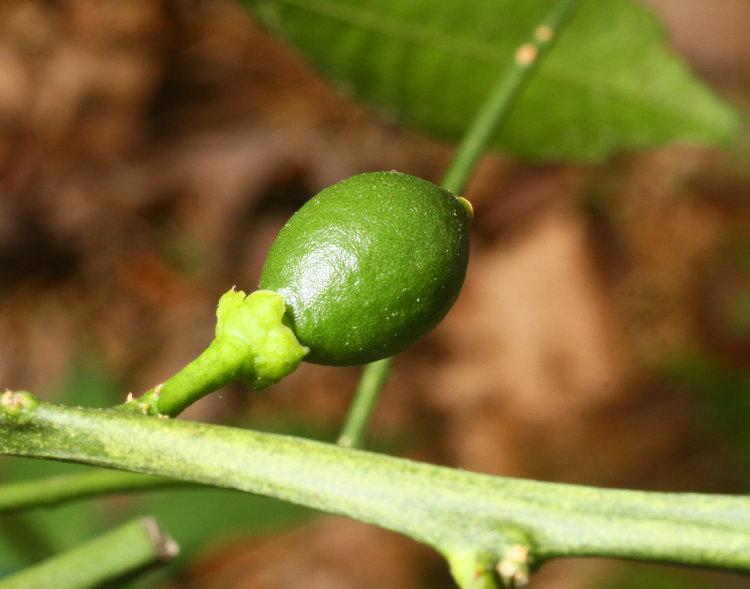
This is one of the lemons, probably the largest so far, which means that it’s likely my bebby, one of the ones I pollinated by hand (well, by brush) while it was blooming within the greenhouse. This tree produced a whopping yield last year, so we’ll see how it goes this year.
In contrast, this is one of the lime trees:

We determined last year that these really were Key limes (Citrus × aurantiifolia,) and they pie they produced was fantastic. The blossoms are not very big, less than a third the size of the lemon blossoms, and don’t last very long, but you can see that a couple appear to be germinating. It becomes more evident elsewhere on the same tree:

I’m no botanist, but those certainly look like they’re developing, and they’re going to seriously weigh down that thin little branch. But they did the same last year with no damage, so we’ll presume the tree knows what it’s doing. Last year’s yield was about 15 limes, I think (for trees that we’d purchased as half-meter saplings that spring,) and this year already looks far better, so we’ll see how it goes.
And The Girlfriend’s cherry tree is kicking, too.
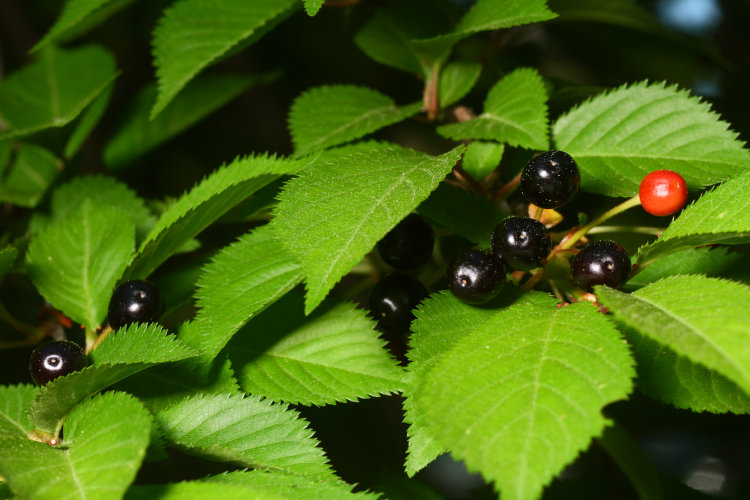
This was taken a couple of weeks ago, as the cherries on the Yoshino cherry (Prunus × yedoensis) tree were just fully ripening, and I expected them to be wiped out in three days as usual. However, they’re still quite present today.

This also shows that one of the emerging cicadas used the cherry tree as a molting spot – you’ll see more of those guys shortly. But I can’t say why the cherries went untouched this year; I’d credit it to the deer repellent, but we were applying that early last year too and the cherries still got wiped out. I have found two discarded pits (not a whole lot smaller than the cherries themselves – the tree is ornamental, not for produce,) but that’s been it.
A few days back, I happened to spot something new in one of the rose blossoms.
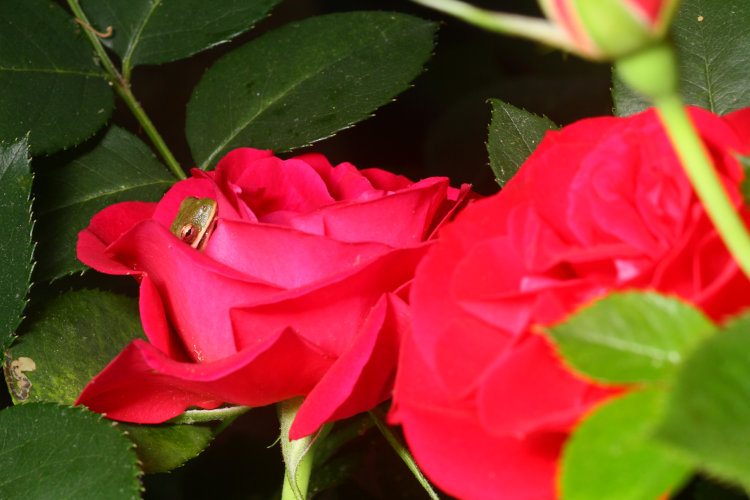
I mean, the property hosts plenty of green treefrogs (Dryophytes cinereus,) but this is the first I’ve seen using the roses in this manner. Granted, this is the first year we’ve had four exuberant rose bushes in pots on the back deck. This is a juvenile, about half size, and not terribly good at blending in, especially considering that it would match any of the hundreds of leaves better, to say nothing of the dense Japanese maple seen earlier, not two meters away. We’ll go in closer.

This might even have been the one I found on the screened porch two nights earlier, and removed to the base of one of the pots where the water reservoir was, in case he needed it. The treefrogs are notorious for finding their way onto the porch but not back off, and more than a couple have died tucked into screened corners, so I try to remember to do routine patrols at night. But this guy may have had the right idea now, since its food would come right to it.
[Side anecdote: A few days earlier, I’d been watering the roses when a honeybee appeared and attempted to partake of the ripe blossoms, but this was easily the stupidest bee I’ve ever seen. Unable to fathom looking for the center or even following the scent, it delved repeatedly into the spaces between the outer petals, came up empty, and tried again only a petal or two further in. Then it abandoned that blossom out of frustration and chose another, doing even worse in this case and starting from the bottom. I watched for about two minutes of this, on multiple blossoms, and the bee never achieved any kind of success. And we wonder about colony collapse…]
One last, the big finish:

Spotted one night while out patrolling with the headlamp, this one maintained this action post while I got situated for a good shot, something that rarely happens; usually, they realize something is going on and align themselves vertically on the post (or plant stem, or branch,) to blend in better and hide their outline. Don’t ask me what’s covering the frog – it was like this when I found it. The perch, by the way, is actually a support pole for a wind sculpture, the same one seen here – it’s been notably popular with the wildlife.



















































